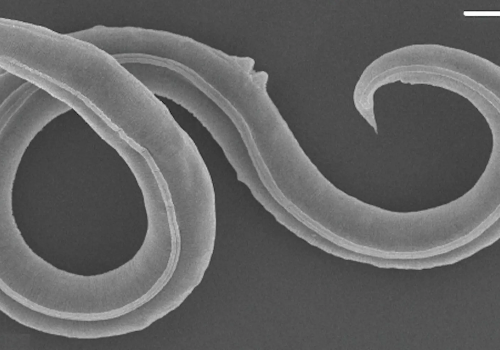 An international team of researchers has revived microscopic worms frozen for 46,000 years, to reveal a previously unknown species of nematode. The study published in PLOS Genetics could help to uncover critical information about how animals adapt to survive extreme environmental conditions.
An international team of researchers has revived microscopic worms frozen for 46,000 years, to reveal a previously unknown species of nematode. The study published in PLOS Genetics could help to uncover critical information about how animals adapt to survive extreme environmental conditions.
Dr Graham M. Hughes, Director of the UCD Centre for Bioinformatics and Ad Astra Fellow at UCD School of Biology and Environmental Science, was a co-author on the study. Dr Hughes is an expert in phylogenetics and had worked with co-authors from the Max Planck Institute for Molecular Cell Biology and Genetics on the Bat1K genome project. His work involves computing an evolutionary tree to show how species are related to each other through comparison of gene sequences.
“Trying to figure out where on the evolutionary tree a particular species should be placed is always a fun challenge in genomics. Trying to figure out where an animal that hasn’t been around for 46,000 years falls on the evolutionary tree was really exciting!”.
Discovering an organisms’ position on the evolutionary tree can help scientists to decipher when and how they adapted features or mechanisms in order to survive. Dr Hughes continued, “In this study, I used a number of different gene sequences taken from a very diverse range of species in the nematode tree to try and figure out if the new worm was a member of a known fossilised organism genera (Panagrolaimus) and if so, where did it fall in the evolution of that particular group. This is important because its position on the tree helps frame the evolutionary story, pinpointing when specific features in that genera arose and how much they were maintained. In this case, results from my analyses show that this is a new species - Panagrolaimus kolymaensis, which is ancestral to modern day species.”
Survival in extreme environments for prolonged periods is a challenge that only a few organisms are capable of. Species like Panagrolaimus can slow their metabolism to an undetectable level, pausing life through a process called cryptobiosis. The study demonstrates that this nematode evolved mechanisms potentially allowing them to suspend life over geological time scales. Its findings are important for the understanding of evolutionary processes because generation times could be stretched from days to millennia, and long-term survival of individuals of species can lead to the refoundation of otherwise extinct lineages. Understanding how these creatures developed could reveal the evolutionary milestones of thousands of species across the planet.
Read the full research article in PLOS Genetics: A novel nematode species from the Siberian permafrost shares adaptive mechanisms for cryptobiotic survival with C. elegans dauer larva
Read more
The Wall Street Journal: It’s Alive! Worms Revived After 46,000 Years in Siberian Permafrost
The Washington Post: Scientists woke up a 46,000-year-old roundworm from Siberian permafrost
Forbes: Nematode Resurrected By Scientists After Being Frozen For 46,000 Years—It Suggests Melting Permafrost Could Release New Disease-Causing Bacteria
The New York Times: Worms Revived After 46,000 Years Frozen in Siberian Permafrost
Image: A scanning electron picture of a female Panagrolaimus kolymaensis nematode roundworm. Credit: Alexei V. Tchesunov and Anastasia Shatilovich/Institute of Physicochemical and Biological Problems in Soil Science RAS, via Reuters